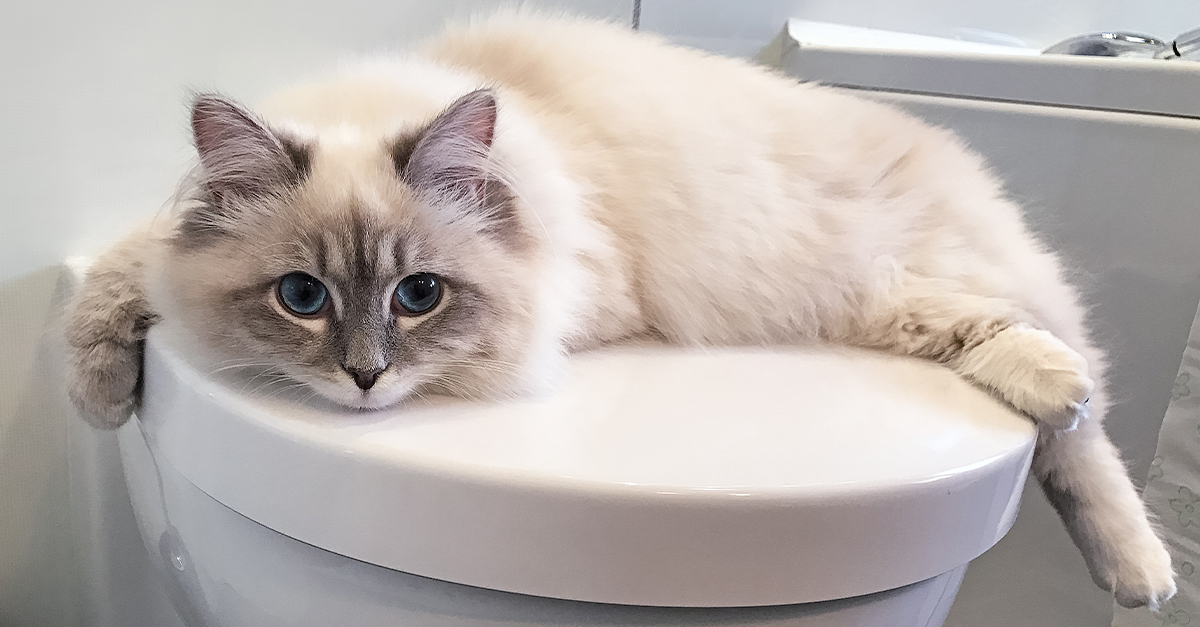Reasons Flushing Cat Poop Down Your Toilet Isn't a Good Idea - Advice for Proper Handling
Reasons Flushing Cat Poop Down Your Toilet Isn't a Good Idea - Advice for Proper Handling
Blog Article
Do you find yourself trying to find facts around Can You Flush Cat Poo or Litter Down the Toilet??

Introduction
As feline proprietors, it's vital to bear in mind exactly how we throw away our feline buddies' waste. While it might seem practical to flush pet cat poop down the bathroom, this method can have harmful consequences for both the setting and human wellness.
Alternatives to Flushing
The good news is, there are safer and more accountable methods to deal with cat poop. Take into consideration the complying with options:
1. Scoop and Dispose in Trash
One of the most usual technique of dealing with feline poop is to scoop it into a naturally degradable bag and toss it in the trash. Make certain to make use of a dedicated litter inside story and get rid of the waste without delay.
2. Use Biodegradable Litter
Opt for naturally degradable pet cat trash made from materials such as corn or wheat. These clutters are environmentally friendly and can be safely taken care of in the garbage.
3. Hide in the Yard
If you have a yard, think about burying feline waste in a marked location away from veggie yards and water resources. Be sure to dig deep adequate to prevent contamination of groundwater.
4. Mount a Pet Waste Disposal System
Purchase an animal garbage disposal system especially made for feline waste. These systems use enzymes to break down the waste, decreasing smell and environmental influence.
Wellness Risks
In addition to ecological issues, flushing pet cat waste can also posture health and wellness threats to humans. Feline feces may consist of Toxoplasma gondii, a bloodsucker that can trigger toxoplasmosis-- a potentially severe disease, particularly for expectant women and people with damaged immune systems.
Ecological Impact
Purging pet cat poop introduces harmful microorganisms and bloodsuckers right into the water supply, positioning a considerable danger to marine communities. These pollutants can negatively affect marine life and compromise water high quality.
Conclusion
Responsible pet ownership expands past providing food and shelter-- it likewise involves proper waste management. By avoiding purging cat poop down the bathroom and selecting alternate disposal techniques, we can reduce our environmental impact and protect human wellness.
Why Can’t I Flush Cat Poop?
It Spreads a Parasite
Cats are frequently infected with a parasite called toxoplasma gondii. The parasite causes an infection called toxoplasmosis. It is usually harmless to cats. The parasite only uses cat poop as a host for its eggs. Otherwise, the cat’s immune system usually keeps the infection at low enough levels to maintain its own health. But it does not stop the develop of eggs. These eggs are tiny and surprisingly tough. They may survive for a year before they begin to grow. But that’s the problem.
Our wastewater system is not designed to deal with toxoplasmosis eggs. Instead, most eggs will flush from your toilet into sewers and wastewater management plants. After the sewage is treated for many other harmful things in it, it is typically released into local rivers, lakes, or oceans. Here, the toxoplasmosis eggs can find new hosts, including starfish, crabs, otters, and many other wildlife. For many, this is a significant risk to their health. Toxoplasmosis can also end up infecting water sources that are important for agriculture, which means our deer, pigs, and sheep can get infected too.
Is There Risk to Humans?
There can be a risk to human life from flushing cat poop down the toilet. If you do so, the parasites from your cat’s poop can end up in shellfish, game animals, or livestock. If this meat is then served raw or undercooked, the people who eat it can get sick.
In fact, according to the CDC, 40 million people in the United States are infected with toxoplasma gondii. They get it from exposure to infected seafood, or from some kind of cat poop contamination, like drinking from a stream that is contaminated or touching anything that has come into contact with cat poop. That includes just cleaning a cat litter box.
Most people who get infected with these parasites will not develop any symptoms. However, for pregnant women or for those with compromised immune systems, the parasite can cause severe health problems.
How to Handle Cat Poop
The best way to handle cat poop is actually to clean the box more often. The eggs that the parasite sheds will not become active until one to five days after the cat poops. That means that if you clean daily, you’re much less likely to come into direct contact with infectious eggs.
That said, always dispose of cat poop in the garbage and not down the toilet. Wash your hands before and after you clean the litter box, and bring the bag of poop right outside to your garbage bins.
https://trenchlesssolutionsusa.com/why-cant-i-flush-cat-poop/

I ran across that review about How to Dispose of Cat Poop and Litter Without Plastic Bags while doing a search on the internet. In case you enjoyed reading our page please make sure you remember to pass it around. Thanks a lot for your time. Visit again soon.
Call Today Report this page